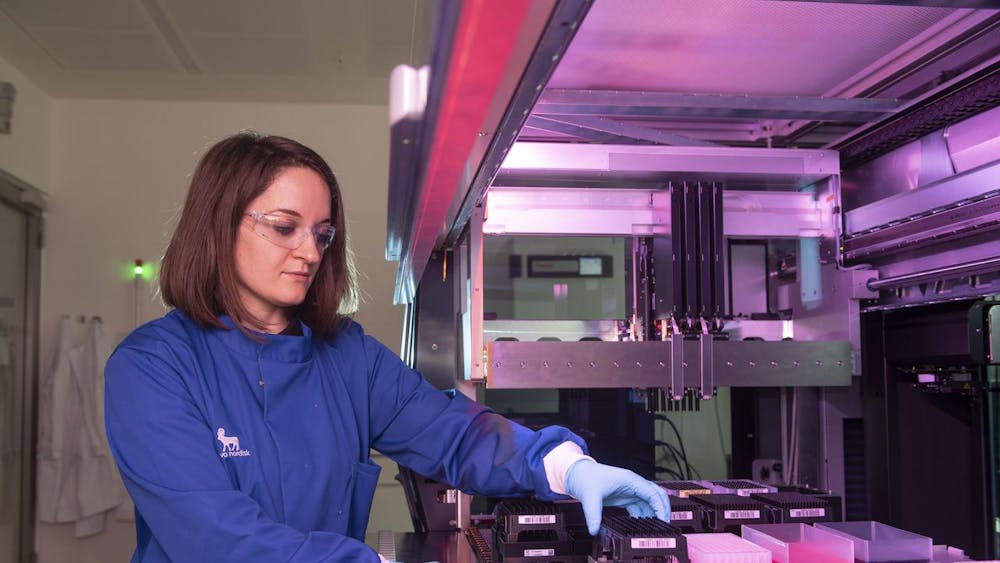A new IU study that found a self-sustaining community of bacteria living 2.8 kilometers below the Earth's surface fuels optimism that similar life could exist on Mars.\nAccording to the study, published in this week's issue of the peer-reviewed journal Science, the bacteria community, which lives completely independent of resources found on Earth's surface, supports itself using resources obtained from water molecules that are converted into energy by radioactive uranium found in subsurface rocks. \nThe study shows the bacterial communities have been living deep in the Earth for millions of years, said Lisa Pratt, geological sciences professor and self-described "bio-geo-chemist." \nDuring the first three years of the six-year study, samples were collected from several different gold mines in South Africa, Pratt said; however, the study was completed using samples from Canadian gold mines. Although the South African study allowed the scientists the deepest access into the Earth, the permafrost found in Canada's colder climate provided a better comparison to conditions on Mars, Pratt said. \nThe organisms found below the surface are related to well-known surface bacteria from the division Firmicutes, Pratt said. \nThe microbes could have been initially carried into the deep earth by the ordinary movement of groundwater circulating through fracture networks below the Earth's surface, Pratt said. This water flowed deep enough into the Earth that it was not circulated back to the surface, and the microbes lived apart from their surface relatives long enough to evolve into their own community, Pratt said. \nAll rocks contain the naturally occurring radioactive elements uranium, potassium and thorium, said Princeton University geosciences professor Tullis Onstott, who collaborated on the project. These elements act as a "little power plant" to the microbes. \nRadioactive uranium interacts with water and splits water molecules, Pratt said. Once split, the products serve as chemical energy microbes can use, Pratt said. \nThis process is similar to photosynthesis, the mechanism through which energy is obtained from the sun and on which surface existence is dependent, Pratt said. However, the underground environment indirectly uses radiation to produce a chemical gradient that provides resources for the microbes, Pratt said. \nMars appears geologically dead, Onstott said, but the planet is composed of rock, water and radiation below its surface. \nThe Earth's atmosphere shields it from radiation from the sun. On Mars, a planet which lacks a protective atmosphere, radiation from the sun sterilizes the surface. Therefore, life on Mars has to be below the surface, said collaborator Doug Rumble, Carnegie Institute of Washington geophysical laboratory staff scientist. \n"The study demonstrates unequivocally that it is possible for organisms to live underground with no connection to the sun," Rumble said. "There are organisms that can live protected from the violent radiation of the sun. Our atmosphere protects us from radiation, but on Mars, where there is no atmosphere, life must be protected." \nMars and Europa, one of Jupiter's moons, are considered the most likely places to find life, the study's lead co-author Li-Hung Lin said. Lin, now an assistant professor at National Taiwan University, was a graduate student at Princeton University during the study. \n"Given that no photosynthesis, no oxygen, occurs on these two planetary bodies and the bedrocks are composed of primarily igneous rocks, we may find microbial communities potentially similar with that in our study," Lin said in an e-mail. \nNo scientific investigation could afford to make the deep subsurface excavations that commercial mines do, Pratt said. The researchers were allowed access by generous mine owners and operators who shared the scientists' curiosity about the unseen part of the biosphere, she said. \nThe researchers, who trekked into the deepest parts of the mine shafts, were subject to the same training and safety precautions as miners, Pratt said, and were only allowed to enter and exit the mines during miner shift changes. \nPratt said she was underground for between 60 and 70 hours during her two field excursions in South Africa. Many of her collaborators spent several weeks on site, going underground two or three times each week. The team spent thousands of hours total underground, Pratt said. \nPratt is also the director of the Indiana-Princeton-Tennessee Astrobiology Initiative. The NASA-funded research center develops instruments and probes to detect organisms living under Earth's surface in preparation for subsurface exploration of Mars and other planets, according to an IU press release. \nThe initiative will use the study published in Science to make research recommendations to NASA, said David Bricker of IU Media Relations. \nA team of scientists from eight collaborating institutions -- \nIU, Princeton, National Taiwan University, Carnegie Institution of Washington, Lawrence Berkeley National Laboratory, Desert Research Institute, University of Toronto, the South African Mponeng mine and the German GeoForschungsZentrum Potsdam -- contributed to the research. The project was funded through grants from the National Science Foundation, NASA and others.
Study fuels debate of life on Mars
Get stories like this in your inbox
Subscribe





